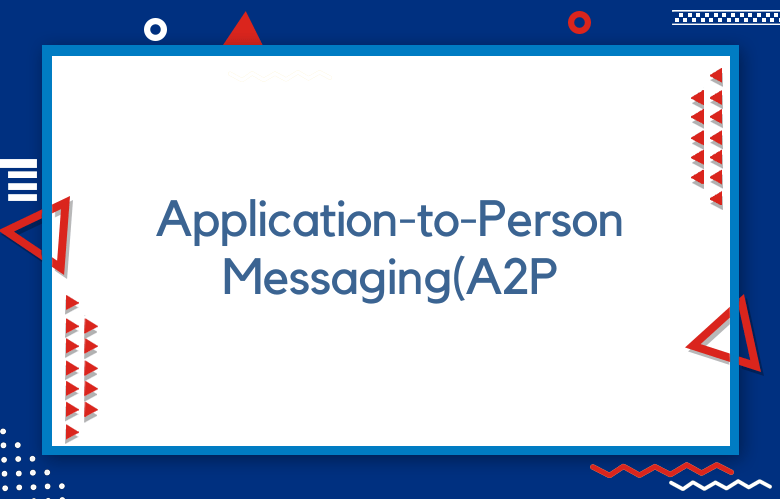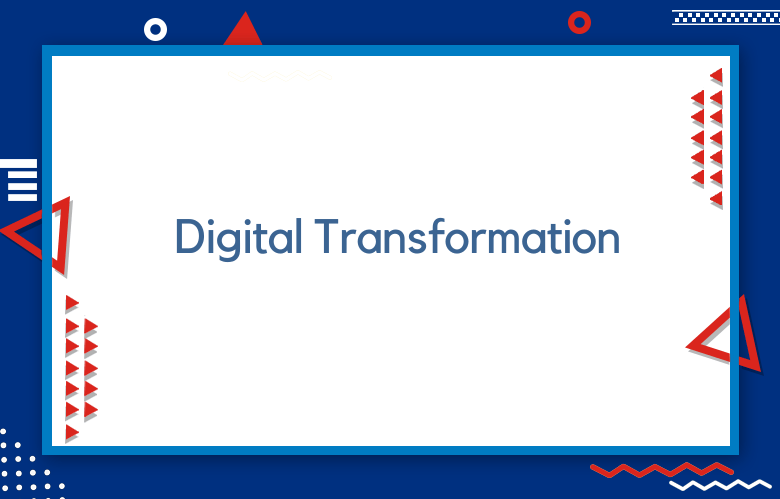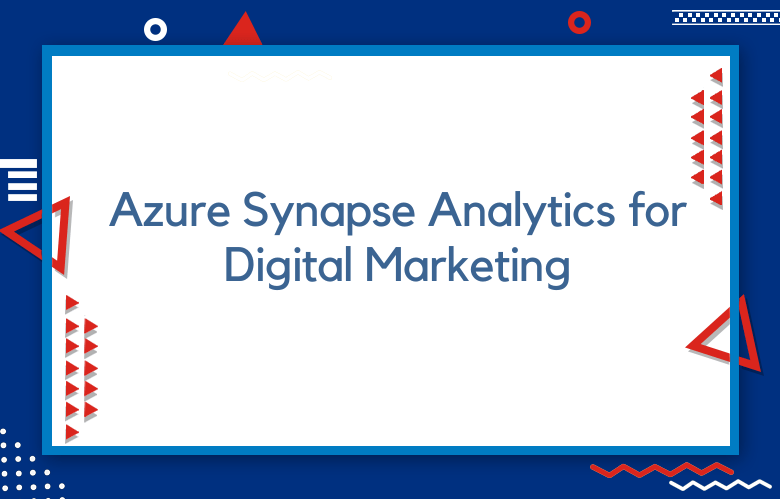Application-to-Person Messaging(A2P): A2P Messaging Benefits and Regulations

With the rapid growth of internet connectivity worldwide, it is no surprise that mobile messaging has become a vital communication tool for businesses.
The benefits of A2P messaging are far-reaching, from customer retention and loyalty to marketing and promotions. A2P messaging is a powerful tool that allows businesses to connect with customers more efficiently.
A2P messaging is an excellent way to establish a personal and direct connection with customers, and even though privacy concerns and regulations exist, the benefits of A2P messaging still far outweigh the risks.
This article will explore the benefits of A2P messaging and discuss the regulations to ensure businesses adhere to them while communicating with their customers.
The primary advantage of A2P messaging for businesses is that it allows them to reach their customers and engage with them directly.
Due to its high open and response rates, A2P messaging is a cost-effective marketing tool that can quickly convey critical messages to a large audience.
A2P messaging can be used in several ways: sending notifications, transaction details, appointment reminders, two-factor authentication, and even promotions.
One of the most significant benefits of A2P messaging is increased customer engagement and retention. According to a recent study, 89% of consumers prefer to communicate with businesses via text message.
Moreover, A2P messaging offers businesses a cost-effective way to establish long-term customer relationships and build loyalty through personalized customer experiences.
What is Application-to-Person Messaging(A2P)?
Application-to-person messaging, commonly referred to as A2P, is a protocol that enables an application to send SMS or MMS messages to a mobile user.
This messaging method has rapidly gained popularity in recent years due to its convenience and widespread adoption, and it is being used across a broad range of industries, including healthcare, finance, retail, marketing, and more.
A2P messaging is a cost-effective solution for businesses to communicate with customers in real-time.
It allows companies to send notifications, alerts, and other transactional messages in an automated manner, thereby increasing customer engagement and satisfaction. Depending on the business’s requirements, these messages can be sent to individuals or groups.
Benefits of A2P Messaging
Increased Reach:
A2P messaging allows businesses to reach more customers than ever before. With A2P messaging, companies can send messages to large groups of customers quickly and easily. This makes it easier for businesses to communicate with and build relationships with their target audience.
Improved Efficiency:
A2P messaging also helps to improve the efficiency of customer communication. By using automated systems, companies can save time and money by sending out messages in bulk rather than individually.
This ensures that customers receive their messages promptly and that the message is not lost in the shuffle of other emails or texts.
Cost Savings:
A2P messaging also helps businesses save money on customer communication costs. By using automated systems, companies can reduce labor costs by eliminating the need for manual customer service representatives or agents responsible for responding to customer inquiries or complaints.
Increased Engagement:
A2P messaging also helps to increase engagement between customers and businesses. By sending out personalized messages, companies can create a more personal connection with their customers, increasing loyalty and sales over time.
Improved Security:
A2P messaging is more secure than traditional SMS because it uses encryption technology to protect data from being intercepted or stolen by hackers or malicious actors.
This ensures that sensitive information is kept safe and secure during transmission from sender to receiver, making it ideal for financial transactions or other sensitive communications like healthcare records or patient information.
Scalability:
Another benefit of A2P messaging is its scalability; businesses can quickly scale up their operations without investing in additional hardware or personnel resources due to its automation.
This makes it an ideal solution for companies looking to expand their reach without making significant upfront investments to do so successfully.
Customization Options :
With A2P messaging, businesses can access various customization options that tailor messages according to their needs and preferences.
This includes customizing message content, scheduling delivery times, setting response deadlines, setting delivery priorities, etc. These features help ensure that messages are sent out when they’re most likely to be seen by recipients, thus improving customer engagement.
Analytics & Reporting :
One of the great benefits of A2P messaging is its ability to provide analytics & reporting on how effective campaigns have been.
Companies can track metrics such as open rate, click-through rate, conversion rate, etc. This helps them better understand what works (and what doesn’t) when communicating with customers via text message.
Regulations of A2P Messaging
A2P (Application-to-Person) messaging refers to sending messages from an application to an individual. These messages can be automated responses, alerts, or two-factor authentication codes, an essential aspect of modern communication.
In recent years, as A2P messaging has grown, governments and regulatory bodies have implemented guidelines and regulations to ensure that A2P messaging is ethical and secure. These regulations protect consumers from unsolicited messages and spam and ensure businesses use A2P messaging responsibly.
One central regulation in the United States is the Telephone Consumer Protection Act (TCPA), which requires businesses to obtain express consent from individuals before sending them text messages. Failure to comply with the TCPA can result in significant fines and legal action.
A2P vs P2P: Messaging Types
Regarding messaging services, two distinct messaging systems exist: A2P (Application-to-Person) and P2P (Person-to-Person). While both serve the purpose of communication between individuals or entities, their applications and functionalities differ.
P2P messaging systems are based on peer-to-peer communication, allowing individuals to communicate with each other in real-time, irrespective of their geographical location and time zone.
They facilitate two-way communication and are commonly used for personal messaging between friends, family members, colleagues, and acquaintances. Examples of P2P messaging systems include WhatsApp, Facebook Messenger, and iMessage.
On the other hand, A2P messaging systems enable businesses to send automated messages to their customers or targeted audiences without any human intervention.
These messaging systems are deployed by companies for various purposes, such as customer support, marketing, and transactional alerts. Some of the most common applications of A2P messaging systems include banking notifications, flight updates, mobile marketing, and appointment reminders.
The messaging is initiated by an application, which sends messages to a database of intended recipients. Famous examples of A2P messaging systems include Twilio, Nexmo, and Plivo.
A2P Compliance Best Practices
Regulatory compliance has become a critical concern as businesses increasingly rely on Application-to-Person (A2P) messaging to communicate with their customers.
Organizations must adhere to various guidelines and regulations to ensure their messaging practices are legal, ethical, and transparent. Failure to comply with these regulations can result in hefty fines, reputational damage, and legal repercussions.
To avoid such risks, businesses should adopt A2P compliance best practices. These include implementing strict opt-in procedures, providing clear and concise messaging, and ensuring all communication is relevant to the recipient. Organizations must maintain accurate and up-to-date records of all messaging activities, including opt-in and opt-out requests.
Exploring A2P Messaging: Types and Examples
Bulk Messaging
Bulk messaging is A2P messaging that allows businesses to send large volumes of messages to many recipients. Bulk messaging is often used for promotional campaigns, such as customer discounts or discounts. Bulk messaging, such as order updates or notifications, can also be used for customer service.
Transactional Messaging
Transactional messaging is A2P messaging used to send customers important information or notifications.
Examples of transactional messages include order confirmations, shipping notifications, payment reminders, and account updates. Transactional messages are typically sent one-on-one and are usually triggered by an action taken by the customer.
Interactive Messaging
Interactive messaging is a type of A2P messaging allows businesses to engage with their customers in real-time via SMS or chatbot conversations.
For example, businesses can use interactive messaging to answer customer questions, provide product recommendations, or collect customer feedback on their experiences with the business’s services or products.
Location-Based Messaging
Location-based messaging is A2P messaging that enables businesses to send targeted messages based on the recipient’s location.
For example, businesses can use location-based messages to inform customers about special offers at nearby stores or restaurants, remind customers about upcoming events in their area, or alert them about traffic delays in their city or town.
Understanding A2P Messaging in the US and Canada
A2P messaging, or Application-to-Person messaging, is a rapidly growing trend in the United States and Canada. It refers to sending automated messages from an application to a person’s mobile phone. The popularity of this messaging method can be attributed to its convenience, speed, and cost-effectiveness.
Several types of A2P messaging exist, including two-factor authentication, appointment reminders, marketing campaigns, and notifications.
Two-factor authentication is a security measure that provides an extra layer of protection by requiring users to verify their identity through a text message. Appointment reminders are automated messages that help individuals keep track of their scheduled appointments and meetings.
A2P 10DLC: The New Standard for Trusted Messages
A2P 10DLC (Application-to-Person 10 Digit Long Code) has emerged as the mobile industry’s new standard for trusted messaging. This standard helps businesses ensure that their messages are delivered to customers safely and securely.
A2P 10DLC addresses the spam and fraudulent activities associated with traditional 10-digit numbers. With A2P 10DLC, businesses must undergo a vetting process and register their numbers with mobile carriers.
This registration process involves providing documentation that proves the business is legitimate and that they have obtained consent from customers to receive messages.
Once a business has gone through the vetting process and registered their number, they are given a trust score determining the messaging traffic level they can send. This ensures that businesses are held accountable for their messaging traffic and that they are not able to engage in fraudulent activities.
Understanding A2P Messaging and Its Applications
As the world continues to move towards a more digitally-driven landscape, the use of A2P messaging has rapidly increased in popularity. A2P (application-to-person) messaging sends automated messages from an application to an individual user.
Unlike P2P (person-to-person) messaging, A2P messaging is often used by businesses, governments, and non-profit organizations to communicate with customers or clients.
One of the most significant benefits of A2P messaging is its ability to reach a large audience cost-effectively. With the help of bulk messaging services, messages can be disseminated to thousands of users simultaneously without manual intervention.
This has incredibly benefited businesses relying on instant customer communication for promotions and updates.
The Difference between A2P and P2P SMS
A2P (Application-to-Person) and P2P (Person-to-Person) are two types of SMS (Short Message Service) messaging that differ in many ways. While P2P SMS is mainly used for personal communication between individuals, A2P SMS is used by businesses and organizations to send automated messages to their customers.
A2P SMS messaging is a highly effective way for businesses to communicate with customers and promote their products and services.
A2P SMS messages are sent using automated software and can be customized to match the business’s branding. They can also be scheduled to be sent at a specific date and time, which makes them highly convenient for companies with busy schedules.
Exploring A2P 10DLC in the US
As mobile communication continues to gain widespread adoption across the globe, Application to Person (A2P) messaging has emerged as an increasingly popular and effective way for businesses to connect with their customers.
In the United States, a new standard known as A2P 10DLC promises to revolutionize the A2P landscape by providing greater security, transparency, and efficiency.
A2P messaging involves sending automated messages from a business to a customer, such as promotional offers, appointment reminders, or customer support notifications.
With mobile phones becoming the primary means of communication for many people, A2P messaging provides businesses with a direct line to their customers, improving engagement, promoting loyalty, and ultimately boosting revenue.
A2P Messaging via 10DLC Phone Numbers
A2P (application-to-person) messaging is a popular communication method businesses use to reach customers. This messaging service is carried out via 10DLC phone numbers, which are long codes that can be personalized to reflect a company’s brand.
A2P messaging disseminates critical information, such as transactional updates, promotional offers, customer feedback, etc.
When it comes to messaging, businesses today need to ensure that their messages reach the right customers at the right time. A2P messaging via a 10DLC number helps them achieve that goal. These messaging solutions are reliable, scalable, and cost-effective, allowing businesses to streamline communication processes.
Benefits of A2P 10DLC Registration with Mobile Carriers
Improved Delivery Rates
A2P 10DLC registration with mobile carriers can help improve delivery rates for SMS messages. Registered messages are more likely to be delivered quickly and reliably, as they are sent on dedicated channels optimized for delivering A2P messages. This helps ensure that messages reach their intended recipients on time.
Reduced Costs
A2P 10DLC registration can also reduce costs associated with sending SMS messages. Since registered messages are sent on dedicated channels, they require less bandwidth than unregistered messages, which can lower prices for businesses sending large text messages.
Increased Visibility
Registering with mobile carriers can also increase visibility for businesses sending A2P messages. Recorded messages are more likely to be delivered quickly and reliably, which increases the chances that their intended recipients will see them. This can lead to increased customer engagement and improved brand recognition and loyalty.
Enhanced Security
A2P 10DLC registration can also provide enhanced security for businesses sending SMS messages. By registering with mobile carriers, companies can monitor and secure their text messaging traffic against potential threats such as phishing attacks or malicious code injections. This helps to protect customer data and prevent fraud or other malicious activities from occurring on company networks or systems.
Improved Compliance
Registering with mobile carriers also helps businesses stay compliant with industry regulations and standards such as GDPR or TCPA regulations, which may require companies to send A2P text messages to register their services with the appropriate carrier before sending any communications into the public domain.
Access to Carrier APIs
By registering with mobile carriers, businesses may also gain access to carrier APIs that allow them to send out text messages programmatically using an automated system rather than having to type out each letter one by one manually.
This can save businesses time and effort when managing customer communications at scale while ensuring accuracy and reliability across all outgoing texts.
More Targeted Messages
Registering with mobile carriers also enables businesses to send more targeted text messages based on customer demographics or interests acquired through 3rd party data providers such as Experian or Acxiom.
By leveraging this data, companies can segment their audiences and tailor messaging campaigns accordingly to maximize engagement and conversion rates.
Increased ROI
Ultimately, registering with mobile carriers allows businesses to send out higher-quality text messaging campaigns at scale, resulting in improved delivery rates, reduced costs, enhanced security, improved compliance, access to carrier APIs, more targeted messaging, and an increased return on investment (ROI) over time.
Types and Examples of A2P Messaging
Short Message Service (SMS)
Short message service (SMS) is a type of A2P messaging that allows users to send and receive text messages.
SMS messages are typically limited to 160 characters and can be sent from any device with a cellular connection. SMS messages are commonly used for marketing campaigns, customer notifications, two-factor authentication, and more.
Multimedia Messaging Service (MMS)
Multimedia messaging service (MMS) is an A2P messaging protocol that allows users to send multimedia content such as images, audio, video, and other files over the cellular network.
MMS messages are typically limited to 1MB and can be sent from any device with a cellular connection. MMS messages are commonly used for promotional campaigns, customer notifications, and more.
Voice Messaging
Voice messaging is an A2P protocol that allows users to send voice recordings over the cellular network. Voice messages are typically limited to 30 seconds in length and can be sent from any device with a cellular connection. Voice messages are commonly used for customer notifications, two-factor authentication, emergency alerts, and more.
Rich Communication Services (RCS)
Rich communication services (RCS) is an A2P messaging protocol that allows users to send rich content such as images, audio files, videos, contact cards, location data, payment information, and more over the cellular network. RCS messages are typically limited to 1MB and can be sent from any device with a cellular connection.
RCS messages are commonly used for promotional campaigns, customer notifications, two-factor authentication systems, interactive experiences such as surveys or polls, and more.
Use Cases and Tools for A2P and P2P Traffic
Use cases and tools for A2P (application-to-person) and P2P (person-to-person) traffic refers to the different scenarios and software applications that facilitate the exchange of information between individuals or applications.
These tools and use cases are crucial for businesses and individuals alike, as they enable streamlined communication, efficient transactions, and improved customer engagement.
One of the primary use cases for A2P traffic is automated messaging. This involves using specialized software to deliver messages to many recipients simultaneously.
Such messages may include appointment reminders, alerts, confirmations, and promotional offers.
Automated messaging can be leveraged by businesses and organizations across various industries, including healthcare, finance, e-commerce, and hospitality, to enhance customer satisfaction and engagement.
Overview of the A2P 10DLC System in the US
The A2P 10DLC system in the US is a new and sophisticated messaging solution crafted for businesses that allow them to communicate directly with their audience via text messaging.
It is a state-of-the-art system that prioritizes transparency, improved messaging deliverability, and, ultimately, an enhanced customer experience. The A2P 10DLC system employs long codes, shortcodes, and registered companies to provide an all-encompassing messaging experience.
One of the key highlights of the A2P 10DLC system is its ability to ensure that messages are delivered expeditiously to customers without interruptions or delays.
This is achieved by utilizing various measures, such as proper routing, optimized message delivery, and carrier filtering. Essentially, the A2P 10DLC system ensures that business messages get to customers promptly and seamlessly.
Detailed Information on A2P 10DLC Registration Process
As the world continues to advance and become increasingly digital, businesses and organizations around the globe must find ways to reach their target audiences and customers more effectively.
One such way that has gained massive popularity in recent years is Application-to-Person (A2P) messaging, which allows businesses to communicate directly with their customers and target audiences through text messages.
To make A2P messaging more secure, reliable, and efficient, the Cellular Telecommunications Industry Association (CTIA) has recently introduced a new registration process for A2P 10DLC (10 Digit Long Code) messaging.
Understanding the Advantages of A2P 10DLC for Businesses
Application-to-Person (A2P) messaging has become increasingly popular in the business world due to its ability to streamline communication processes between businesses and customers.
However, recent updates to the A2P messaging system, such as the introduction of A2P 10DLC (10-digit extended code), have further enhanced these advantages and provided numerous benefits for businesses.
One of the most significant advantages of A2P 10DLC is improved message delivery rates. This is because A2P 10DLC utilizes dedicated long codes registered with mobile carriers for A2P messaging, making them more reliable and less likely to be blocked or filtered by pages.
As a result, businesses can ensure that their messages are more likely to reach their intended recipients, increasing the success of their communication efforts.
A2P Messaging Platforms
A2P messaging platforms (Application-to-Person) are software systems that enable businesses and organizations to send text messages to consumers or individuals.
This messaging platform is fast becoming an important communication channel for businesses of different sizes, ranging from small-scale startups to large enterprises.
The A2P messaging platform is designed to provide a cost-effective, reliable, and secure way for businesses to communicate with their customers.
With the rise of mobile devices, text messaging has become a ubiquitous communication method, and businesses have taken advantage of this to reach their customers instantly.
A2P Messaging Trends
A2P messaging has become increasingly popular as businesses and organizations seek more efficient ways to communicate with customers. A2P, or application-to-person messaging, involves using automated messaging systems to deliver messages to individuals.
Several trends in A2P messaging have emerged in recent years. One such trend is the growing use of cloud-based messaging platforms to deliver A2P messages.
These platforms offer several benefits, including improved scalability and flexibility, enhanced security, and easier integration with other systems.
Another trend in A2P messaging is the use of artificial intelligence (AI) and machine learning (ML) to automate the delivery of messages. These technologies enable businesses to personalize messaging and optimize message delivery for maximum impact.
Conclusion:
A2P messaging is a powerful communication tool businesses use to engage with customers and reach their target audience more effectively.
Despite the regulations, A2P messaging provides a cost-effective marketing strategy that enables businesses to connect with their customers efficiently and straightforwardly.
A2P messaging benefits businesses by increasing customer engagement and retention, and even though businesses face regulatory compliance issues, they need to ensure that messaging services are entirely secure, are delivered efficiently, and adhere to regulatory standards.
In sum, A2P messaging offers businesses a promising future in engaging with customers and promoting their products and services.
Call: +91 9848321284
Email: [email protected]



